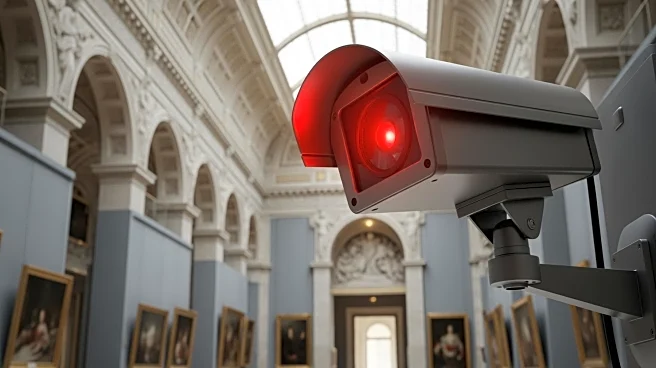What's Happening?
Following the daring theft of eight valuable items from the Louvre Museum, experts express concerns that the stolen jewels may already be dismantled and sold. The heist, executed in broad daylight, involved
thieves breaking into the museum and escaping on scooters. Dutch art detective Arthur Brand suggests the jewels could be broken into parts and smuggled out of France. The stolen items include a necklace and earrings from the Marie-Louise collection and a tiara worn by Empress Eugénie. Authorities suspect the involvement of organized crime networks, and a specialist police unit is investigating the case.
Why It's Important?
The potential loss of these culturally significant jewels represents a major blow to France's national heritage. The incident highlights the challenges faced by law enforcement in recovering stolen artifacts, especially when organized crime is involved. The theft could have a lasting impact on the art and jewelry markets, as stolen items are often difficult to trace once they are dismantled. The heist also raises questions about the security of cultural institutions and the need for enhanced protective measures. The incident underscores the importance of international cooperation in combating art theft and preserving cultural heritage.
What's Next?
The French police are actively pursuing leads, with forensic analysis of evidence left at the scene. Authorities are working to identify the perpetrators and recover the stolen items. The international art community may increase efforts to track and recover stolen artifacts, with potential collaborations between museums, law enforcement, and private collectors. The outcome of the investigation will be closely monitored by stakeholders in the art and cultural heritage sectors. The incident may prompt museums worldwide to reassess their security measures and consider technological advancements to prevent future thefts.
Beyond the Headlines
The theft of the Louvre jewels highlights broader issues related to the illicit trade of cultural property. The involvement of organized crime networks in art theft poses significant challenges for law enforcement, as these groups often have sophisticated methods for smuggling and selling stolen items. The incident underscores the need for international cooperation in combating art theft and preserving cultural heritage. The heist also raises ethical questions about the responsibility of museums to protect their collections and the role of private collectors in the art market.











